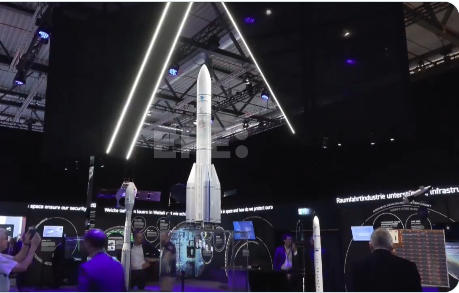Does Trump have some competition from the EU?
After a year without independent space launch capabilities, the European Space Agency (ESA) is gearing up for the debut launch of its new Ariane 6 rocket. The Agency’s Director General, Josef Aschbacher, recently declared July 9 as the target date for this milestone event, which is set to take place at Europe’s spaceport in French Guiana. This follows ESA’s earlier announcement of a two-week launch window, now refined to a specific date.
“Wir wollen die deutsche und europäische Luftfahrtindustrie weltweit auf einem Spitzenplatz sehen”, so @Bundeskanzler Scholz. Angesichts wachsender Bedeutung von Weltraumtechnologie stellt die #Ariane6 die Wiederherstellung der technologischen Souveränität Europas dar. pic.twitter.com/nYLWPAnpZi
— phoenix (@phoenix_de) June 5, 2024
The Ariane 6 is a heavy-lift rocket, a successor to the Ariane 5, which had its last mission in 2021 with the launch of NASA’s James Webb Space Telescope. Built by the primary contractor, ArianeGroup, Ariane 6 features enhanced flexibility to cater to various mission needs. It offers two nose cone sizes and the option to use either two or four boosters, tailored to the specific requirements of each journey into space.
A standout feature of Ariane 6 is its capability for ride-sharing missions, allowing multiple payloads to be launched simultaneously, much like the services provided by SpaceX. Its inaugural flight is slated to be just such a mission, carrying 11 small satellites and scientific payloads, including contributions from NASA. This approach not only maximizes efficiency but also extends the opportunity for smaller satellite projects to reach space.
Loïc Bourillet, head of ESA’s Collective Launch Service Procurement, emphasized the innovative nature of this launch. Instead of a typical inert payload, the mission will carry a variety of active, data-collecting instruments. Among them is YPSat, which will remain attached to the Ariane 6’s upper stage post-launch to record data on the rocket’s ascent.
Elon Musk when asked if Europe’s Ariane 6 rocket, which will launch next month for the first time after 10 years of development, has a chance to be competitive: “I have said for many years that it’s completely pointless to develop rockets that are not reusable.” pic.twitter.com/FrK2DJ27Iw
— ELON DOCS (@elon_docs) May 24, 2024
The introduction of Ariane 6 marks a significant step for ESA in reclaiming its capability for independent space access. This was a capability briefly suspended following the final flight of Ariane 5 in July 2023, during which time ESA had to rely on commercial launch services, including a recent contract with SpaceX to launch the EarthCARE satellite.
Aschbacher hailed the Ariane 6 as a product of extensive collaboration and innovation across Europe, symbolizing a new era of autonomy in space for the continent. With 30 missions lined up for Ariane 6, ESA aims to conduct two launches by the end of 2024, reinforcing its restored and robust access to space. This progression not only underscores the technological strides made by ESA but also reaffirms its strategic role in global space exploration and satellite deployment.
Major Points
- The European Space Agency (ESA) is scheduled to launch its new Ariane 6 rocket on July 9 from French Guiana, marking a significant return to independent space access after a year-long hiatus.
- Ariane 6, developed by ArianeGroup, is designed to be adaptable with two nose cone sizes and options for two or four boosters, depending on the mission requirements.
- The first flight of Ariane 6 will be a ride-sharing mission carrying 11 small satellites and scientific payloads, including one from NASA.
- The launch strategy includes the use of active payloads for data collection, such as YPSat, which will monitor the rocket’s ascent while attached to the upper stage.
- ESA plans to execute 30 missions with Ariane 6 and aims to complete two launches by the end of 2024, reinstating Europe’s autonomous capabilities in space exploration.
Susan Guglielmo – Reprinted with permission of Whatfinger News



